Supply Chain Optimization: Unlocking Technology Potentials!
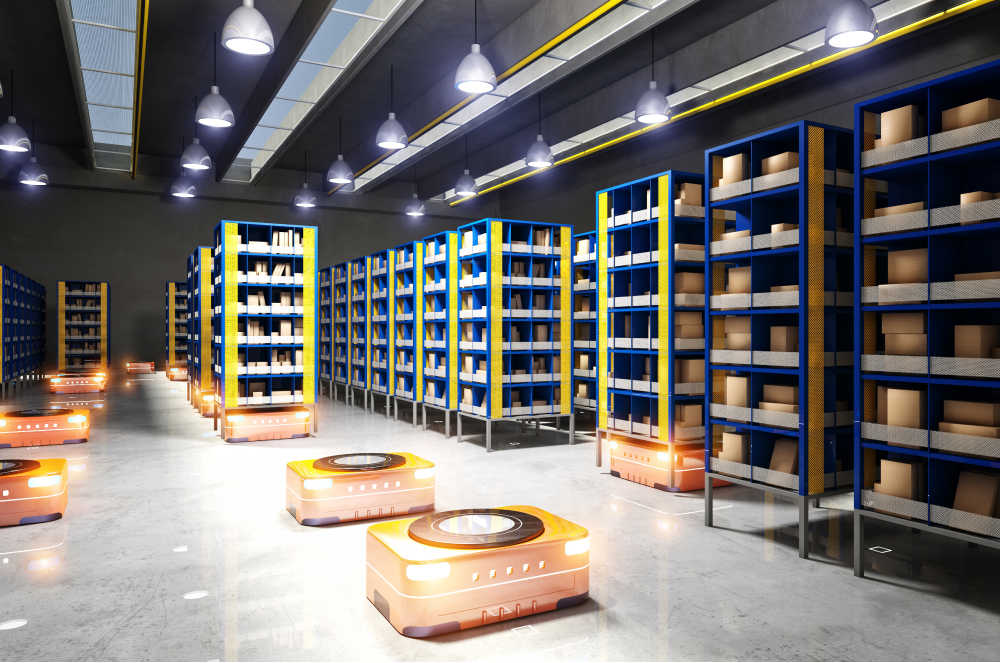
Over the past two decades, technological innovations and breakthroughs have come roaring out of high-tech labs to become something that people use every day without even realizing it. In addition to powering numerous apps and other digital products, technology stands to benefit all industries, including supply chain management and logistics.
Beyond any doubt, the majority of supply chains have greatly expanded due to the remarkable proliferation of computer networks, Internet tools, coupled with other technology platforms. Such innovations have opened the door for true collaboration between partners, distributors and suppliers that extended well beyond the four physical – and virtual – walls of the enterprise.
Besides, every single business has been forced to evolve or perish when it comes to supply chain optimization – to apply the optimal processes as well as navigating the new tools and best practices for supply chain management. Yet, understandably, there still exist various challenges and trade-offs that affect their increasingly complex, competitive and transparent supply chains. Getting to know the magical power of technology adoption, some potential technology platforms as well as a handful of companies successfully leveraging logistics technologies will be a great starting point for you to easily overcome these structural challenges and have an ace up your sleeve!
Technology Adoption & Supply Chain Optimization: Why Does It Matter?
Given the technical complexity and possibly exorbitant initial costs of integrating technology infrastructure, there remain several huge advantages of utilizing technology in supply chain management, which includes: Effective tracking, transparency, cost-saving, and accuracy.
When it comes to supply chain process optimizing, technology plays a vital role in keeping track of the goods, control inventory management as well as increasing the speed of delivery. Also, from the customers’ view, many available tech-powered apps or platforms do provide them an opportunity to track their order – actively and effortlessly, which will give them a sense of satisfaction and then an intention to come back to your business.
Another great attraction of technology integration is the time it can save by eliminating the need for manual hand-scanning with the advent of various software and their automation features. Besides, by providing automation vehicles or driverless vehicles, technology could help executives reduce transportation costs. Since these tech-based means can control the route and find the best way in order to speed the time spending on shipping goods; it also minimizes time and other arising sub-charges such as fuel cost. Employing such automated tools can avoid human errors, too!
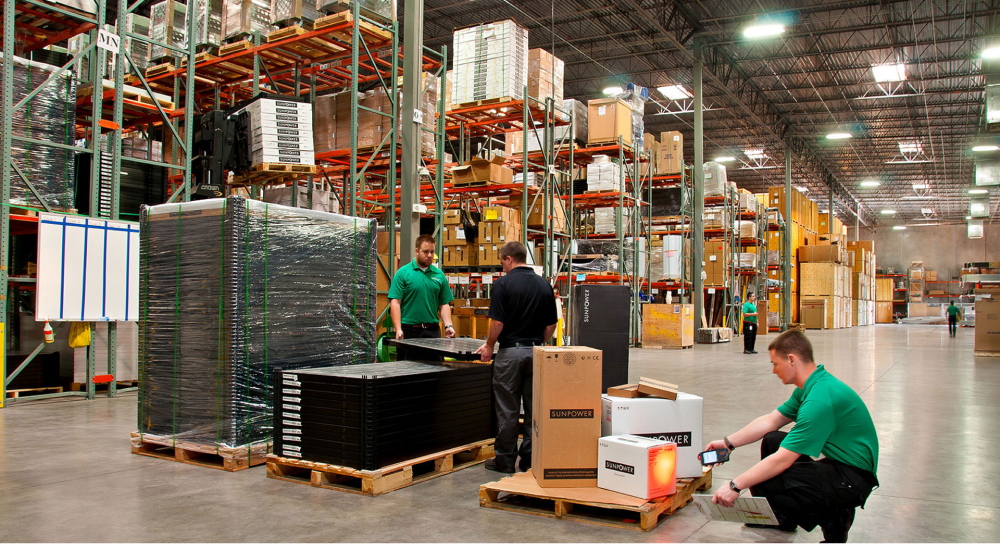
The lack of transparency in modern supply chains is another major issue of a large number of entrepreneurs. To be more precise, supply chain transparency refers to the fact that companies know what is happening upstream in the supply chain and to communicate this knowledge both internally and externally. This concept has virtually existed for around 15 years, yet today it commands the attention of mid- and senior-level managers across a broad spectrum of companies and industries.
One major reason such a process has become increasingly important is that more consumers are demanding it. According to a study at the MIT Sloan School of Management in mid-2018, it was highlighted that several consumers may be willing to pay 2% to 10% more for products from companies that offer greater supply chain transparency. Across industries and niches, this growing segment of discerning consumers seeks information on product ingredients and materials, where products come from, and the conditions in which they were produced.
Since these information demands have increased, so has the reputational risk for businesses from media and NGO campaigns – in practice, a large number of scandals have inflicted considerable damage to the reputations of companies. More than that, a lack of supply chain transparency can now stop businesses cold. This is where technology comes into place – it empowers businesses to keep track of huge sets of data from different sources and systemize them to improve organizational transparency. For instance, there are some technology platforms that can not only show you the origin of products but also exactly point out the real-time location!
Key Technology Platforms to Ignite Supply Chain’s Effectiveness
Once you’ve grasped the significance of technology adoption to supply chain optimization, it’s time to go through a list of super-powerful technology platforms to leverage for the sake of your company!
1. Artificial Intelligence (AI)
AI has made itself an increasingly viable technology in several fields, but how exactly can this technology transform the supply chain and logistics management?
Actually, employing AI in supply chain management has been more and more popular in our modern world. McKinsey & Company expects businesses to gain between $1.3 trillion and $2 trillion a year in economic value by using AI in their supply chains. Now, let’s take a deeper look over how AI has revolutionized such an economic sphere!
First of all, AI allows greater contextual intelligence which provides management executives essential knowledge to reduce operations costs and inventory and respond to clients quicker. The adoption of machine learning and other AI technologies does offer new insights into a wide range of aspects, including logistics and warehouse management, collaboration, and supply chain management. Based on Artificial Intelligence in Logistics, a report by DHL and IBM, there are a number of technologies capable of doing that, some of them include:
- Intelligent Robotic Sorting: an effective, high-speed sorting of letters, parcels, and palletized shipments
- AI-Powered Visual Inspection: be capable of taking photos of cargo using special cameras, which allows to identify damage and identify an appropriate corrective action
Moreover, AI can present an unmatched analysis of supply chain management performance, which, in turn, allows you to determine new factors affecting real productivity. According to the aforementioned report by DHL and IBM, AI combines powerful capabilities of three sophisticated technologies – namely, supervised learning, unsupervised learning, and reinforcement learning – to define vital factors and issues impacting the performance of the supply chain. For instance, supervised learning and unsupervised can detect identity fraud and make informed predictions, whereas reinforcement learning can facilitate real-time decisions by providing relevant historical and real-time data.
Another magical power of AI in supply chain optimization is its capability of analyzing enormous volumes of data, which “used to be” one heck of a challenging job, riddled with uncertainty, with everything in flux. In fact, before the advent of AI-based technologies, earlier platforms were not able to deliver real value since they didn’t take into account this wide variety of factors such as consumer attributes on the demand side. At present, AI enables the tracking and measurement of almost all the factors that are required to improve demand forecasting accuracy.
By providing supply chain managers with an endless loop of forecasting, continuously adjusting the forecast based on real-time sales, weather and other information factors, AI enables them to reshape warehouse management – with self-driving forklifts, automated sorting, and self-managing inventory systems powered by drones and autonomous ground vehicles. Plus, businesses can reduce supply chain latency for parts utilized in the most popular or highly customized products with the adoption of AI to predict demand and optimize the flow of those critical parts to keep production moving smoothly.
And finally, AI can enhance the customer experience by personalizing the relationships between logistics providers and customers. An outstanding example of personalized customer experience is DHL Parcel’s cooperation with Amazon. The delivery company offered a voice-based service to track parcels and get shipment information employing Amazon’s Alexa-powered Echo.
2. Blockchain
In addition to AI, blockchain turns out to be another critical technology platform to address supply chain challenges as a less corruptible and better-automated alternative to centralized databases.
Firstly and obviously, since blockchain allows data to be more interoperable, it becomes easier for businesses to share information and data with manufacturers, suppliers, and vendors, which ultimately improves supply chain transparency. Not only does transparency in blockchain prevent goods from getting stuck but it also helps to reduce delays and disputes. Because each product can be separately tracked in real-time, the chances of misplacements are rare.
Another huge advantage of the platform is its scalability – through which any large database is accessible from multiple locations from around the world. In addition to accessibility, blockchain also offers executives higher standards of security as well as the ability to customize according to the data feed. Also, blockchains can be created in a private manner, enabling data sets to be accessed explicitly between the parties who have permission for it.
What’s more, the value of integrating blockchain technology into supply chain management and logistics can be taken from the fact that it gets the potential to connect different ledgers and data points while maintaining the data integrity amongst multiple participants. In practice, the properties of transparency and immutability presented by blockchain technology make itself useful for eliminating fraud in supply chain and maintaining the integrity of the system.
Besides, there exist other tremendous benefits of leveraging Blockchain technology in the supply chain scene, which include:
- Reduce or even eliminate fraud and errors
- Provenance tracking
- Control inventory management
- Minimize courier costs
- Diminish delays from paperwork
- Facilitate the system issue identification process
- Establish and cement consumer and partner trust
3. The Internet of Things (IoT)
Quite similar to the blockchain platform, IoT is amongst the most common ways that empower supply chain management to be more effective by providing better tracking goods, better inventory management, and reduce operating costs. Actually, you can also utilize it throughout manufacturing and logistics processes, demand management, preventative maintenance, and sourcing applications. Plus, according to the World Economic Forum, by 2022, staggeringly one-trillion sensors are projected to be connected to the Internet, which cements IoT’s functions as an unlimited online data connector serving almost all industries.
To take a deeper look over the Internet of Things and supply chain optimization, one of the greatest impacts of IoT on supply chain is effective inventory management. The technology allows warehouse and fleet managers to keep track of their cargo and inventory. Specifically, the IoT sensors will allow you to minimize errors, view your inventories anytime you wish with just a few clicks. To take an example, Amazon, a tech giant that has to manage a large number of products with wide varieties of colors, sizes, and weights, has been using Wi-Fi connected robots since 2012 to identify products by reading QR codes using built-in cameras.
Whilst inventory tracking and monitoring turn out to be the main objectives for IoT deployment in supply chain management, there’s more to the Internet of Things than its asset management potential. Below are some other prominent effects of the IoT supply chain revolution:
- Real-time location-tracking:
The IoT presents supply chain managers and executives with a coherent stream of real-time data regarding the location of the product as well as the transportation environment. Should any product be shipped in the wrong direction, you will be alerted and then be able to monitor the delivery of ready goods and raw materials to the right one.
- Storage condition monitoring:
With the invention and application of environmental sensors, supply chain managers can easily keep track of the whole shipment process — the temperature inside the vehicle, pressure, humidity, and other factors that can possibly compromise the product’s integrity.
- Forecast the movement and the arrival of the product:
By providing an essential amount of insightful data, the Internet of Things allows supply chain managers to drive better decision-making and enhance the precision of delivery forecasts. Thanks to real-time tracking, any supply chain IoT company will be able to predict the final delivery date as well as forecast and mitigate risks before they actually occur.
- Locate goods in the warehouse
Actually, IoT deserves to be one of the most outstanding warehouse technology trends as it does positively impact the efficiency of warehouse employees, allowing them to spend less time on locating a delivery. Thanks to real-time location trackers, the workers will know the exact aisle for a specific parcel.
Also, combined with AI, IoT is a stepping stone for automated vehicles that can retrieve devices with no human supervision. It does enable a seamless workflow that turns out impossible to achieve otherwise.
- Improve contingency planning
Another capacity of the Internet of Things is contingency planning. In fact, IoT devices help supply chain managers to plan routes, taking into account the number of accidents or other delay-inducing occurrences that happened on the highway. The Internet of Things curates all data needed to develop flexible contingency plans and get to the cause of existing delays. This technology platform offers supply chain managers real-time alerts that increase the speed of risk mitigation.
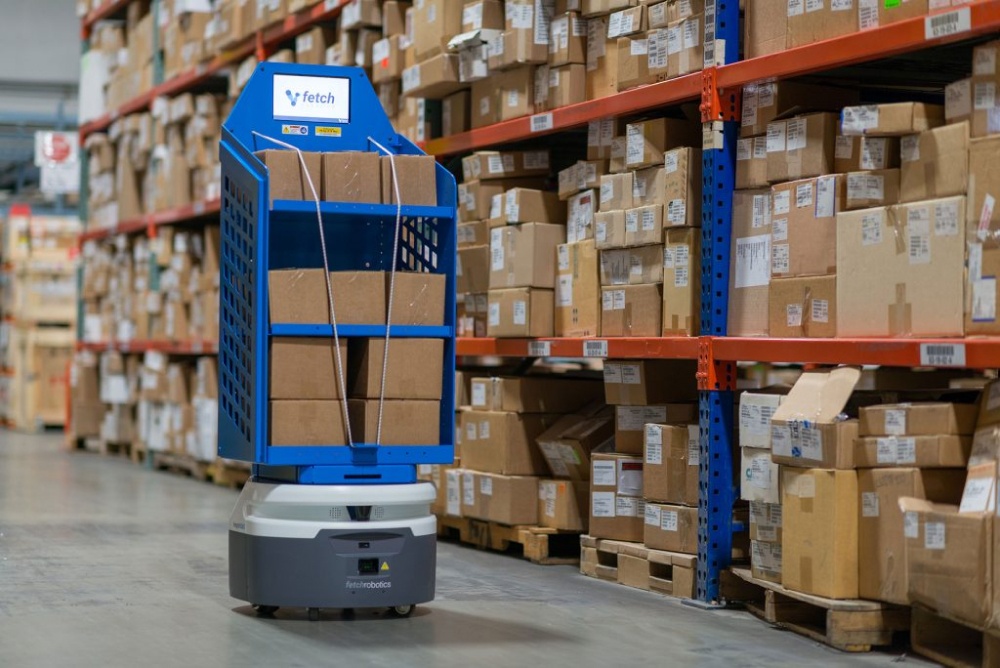
4. Robotic Processes Automation (RPA)
For those who are not in the know, robotic process automation (or RPA for short) is a form of business process automation technology based on metaphorical software robots (bots) or artificial intelligence (AI) workers. Approximately 938,000 robotic units are expected to work alongside their human counterparts by 2022. RPA is becoming more and more prevalent in supply chain and logistics management with several crucial applications. To be more precise, RPA has been adopted in the supply chain to minimize the actions of humans: capturing, replicating, and processing data, communicating with customers, as well as making judgments and learning from past actions.
One well-known application of robotic process automation within the sphere of supply chain management is in managing inventory. RPA is a powerful assistant in tracking inventories – not only can it keep a tab on inventory levels, notify managers when stock levels are low, automatically reorder products but also predict the optimal inventory levels.
In addition to inventory control, communication is undoubtedly another essential factor in effective supply chain management. With the automated process RPA provides, you have the chance to improve communication with suppliers, manufacturers, transportation service agencies, and customers.
Other prominent features that RPA offers include:
- Automated inventory management
- Automated email
- Price comparison
- Respond to supply chain request
- Purchase order management
- Vendor selection
- Supply and demand planning
Tech-Powered Supply Chain Market: Top Noteworthy Cases
#1. Walmart
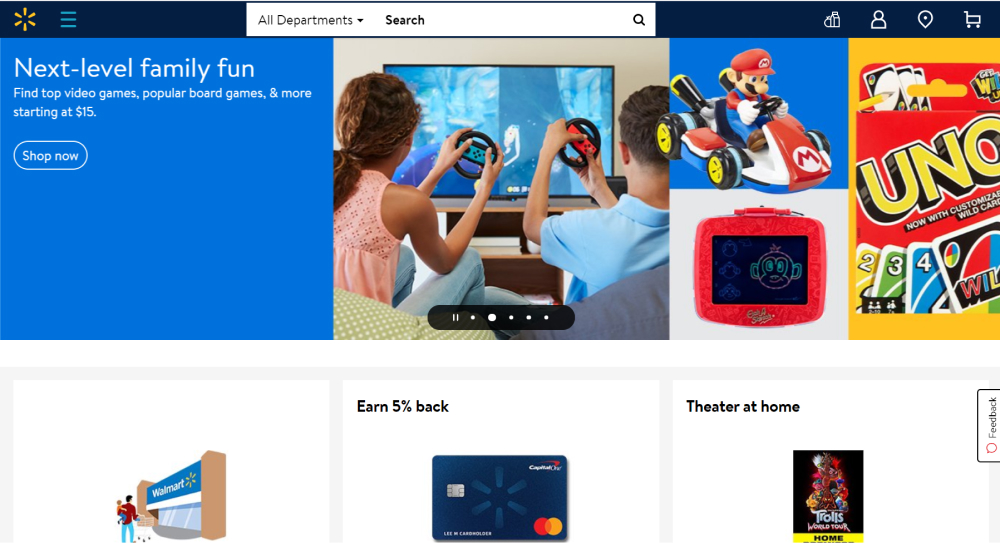
The lack of transparency within Walmart’s multi-actor food supply chain makes it difficult to track and identify the provenance of their products. No matter how trivial this might seem to be, the issue turns out rather vital, especially when the food is contaminated and causes illness in customers. Thus, with the belief that blockchain technology might be a good fit for the decentralized food supply ecosystem, the retail giant Walmart has been working with IBM on blockchain experiments – a food traceability system based on Hyperledger Fabric – with the goal of enhancing their supply chain transparency and tracking their goods more efficiently.
Initially, they ran two proof of concept projects to test the traceability system – one project was about tracing mangos sold in Walmart’s US stores and the other aimed to trace pork sold in its China stores. Ultimately, the Hyperledger Fabric blockchain-based food traceability system built for the two products did work. For pork in China, it allowed uploading certificates of authenticity to the blockchain, bringing more trust to a system where that used to be a serious issue. And for mangoes in the US, the time needed to trace their provenance went from 7 days to… 2.2 seconds!
With such a success, Walmart can now trace the origin of over 25 products from 5 different suppliers using a system powered by Hyperledger Fabric. The company plans to roll out the system to more products and categories in the near future. In fact, it has recently announced that it will start requiring all of its suppliers of fresh leafy greens (like salad and spinach) to trace their products using the system.
#2. LLamasoft’s Supply Chain Guru

Supply Chain Guru is an end-to-end supply chain analytics platform, dedicatedly developed by LLamasoft – the science behind the real-world supply chain decisions business leaders are called upon to make. Demand Guru was adopted by Cummins Inc. to develop an overall full-stack operational inventory model in a multi-echelon kind of environment.
Since it can help with frequent and accurate forecast of future demand, this platform increasingly becomes a demand modeling tool to enable companies to develop more customized demand planning solutions. And when it comes to its forecasting functions, this tool empowers supply chain managers to more easily clean, blend and then ingest time series data and then test whether that data set improves forecasting over some forecast period or ship to location. Historical third-party data can be imported into the software and then the company can examine whether their past forecasts could have been improved by using that data set.
#3. Maersk
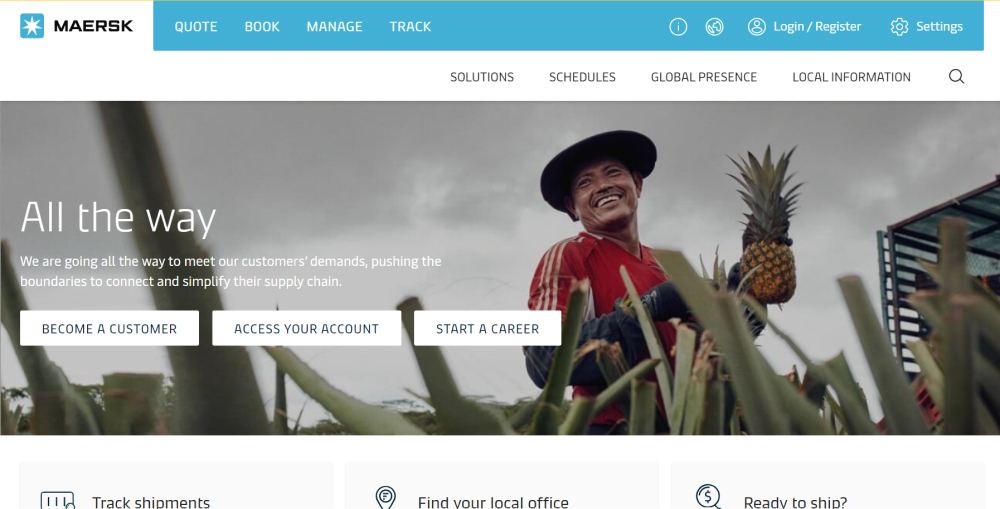
Maersk, which has marked its name as the world’s largest container shipping company, started a joint venture in a collaboration with IBM in early 2018 – to streamline ocean freight with a blockchain system that tracks international cargo in real-time.
Such a blockchain-based system turns out to be a huge success, particularly in digitalizing workflows and empowering each stakeholder in the supply chain to follow the progress of goods during the transit process. Blockchain technology proves to be an ideal option when it comes to ensuring secure data exchange and a tamper-proof repository for customs documents, bills of lading and other data as well as making them available to the stakeholders. All in all, such partnership of applying blockchain to digitize supply chains has helped to reduce fraud and delays, which could result in billions of dollars in savings.
#4. United Parcel Service (UPS)

In the early of 2018, UPS – a global leader in logistics, offering a broad range of solutions including transporting packages and freight – launched its popular chatbot on the Google Assistant, giving customers another convenient way to retrieve information on package deliveries and other UPS services via the Assistant on Android phones, iPhones, smart speakers like Google Home and other compatible devices.
Plus, such a chatbot’s expansion to the Google Assistant marked a critical step for UPS since it makes new inroads into Artificial Intelligence (AI). AI and machine learning, together with big data and the Internet of Things, have underpinned many of the technologies that support UPS’s global logistics network.
“UPS is constantly building new ways to make it even easier to do business with us,” said Jerome Roberts, UPS vice president of global product innovation. “The AI-enabled UPS chatbot is available where our customers need it to be, and its functionality is getting better all the time.”
“AI interactions are becoming increasingly more significant at a time when customers perform more business online,” said Andrew Van Beek, UPS vice president of applications development. “This trend demands smooth user experiences, including those that occur via chatbots.”
#5. Amazon’s Alexa – Voice Agents
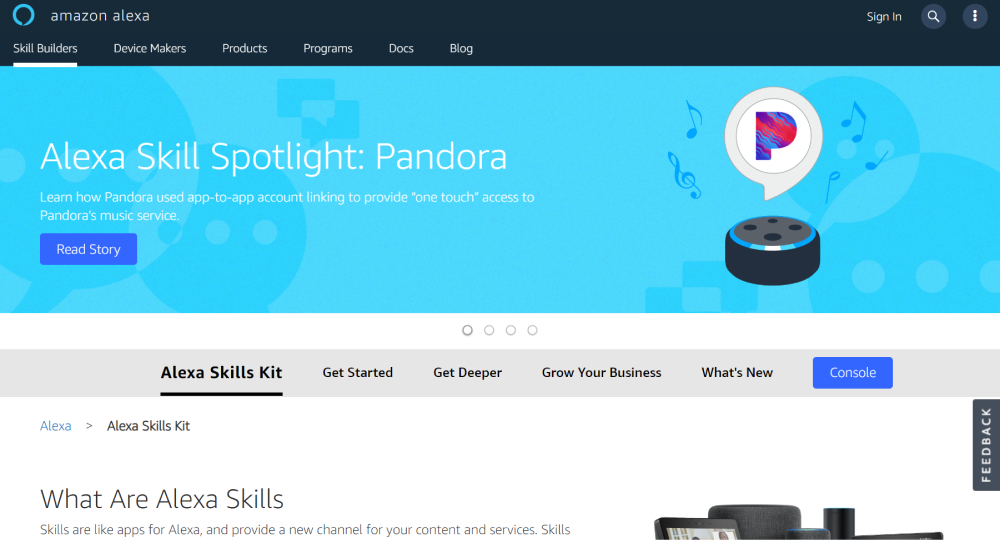
Alexa is Amazon’s cloud-based voice service available on hundreds of millions of devices from Amazon and third-party device manufacturers. By building natural voice experiences that offer customers a more intuitive way to interact with the technology they use every day, voice agents can significantly improve and personalize the customer experience for logistics providers.
In 2017, DHL Parcel was amongst the first last-mile delivery companies to offer a voice-based service to track parcels and provide shipment information using Amazon’s Alexa. Customers with an Amazon Echo speaker in their home can simply ask things like “Alexa, where is my replica watches swiss parcel?” or “Ask DHL where is my parcel.” They can then speak their alphanumeric tracking number and receive shipment updates. If there was a problem with the shipment, Echo users could also ask DHL for help and be redirected to the customer assistance department of the company.
The Bottom Line
From unmanned mobile robots in warehouses to drones for online fulfillment, the current sphere of supply chain and logistics management is undergoing a major transformation. With the unlimited possibilities in Artificial Intelligence, Blockchain, IoT, RPA and much more technology platforms, the future supply chain holds the promise of being completely optimized, autonomous and even self-orchestrated.
Notwithstanding some initial technical puzzles, within the future digital realm, the rewards of technology adoption will be tremendous and companies – that know how to leverage them effectively – will gain significant advantages.








